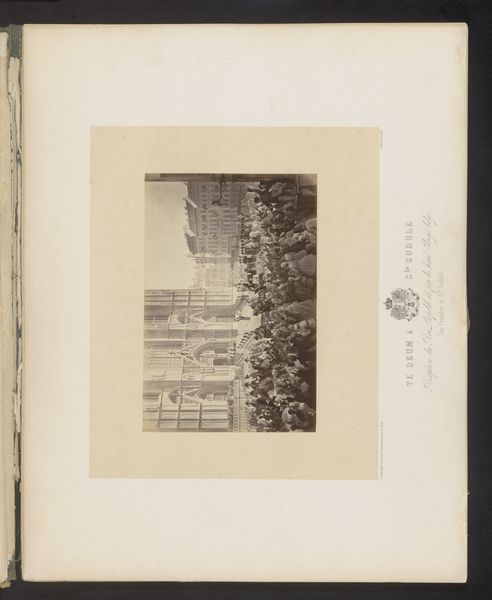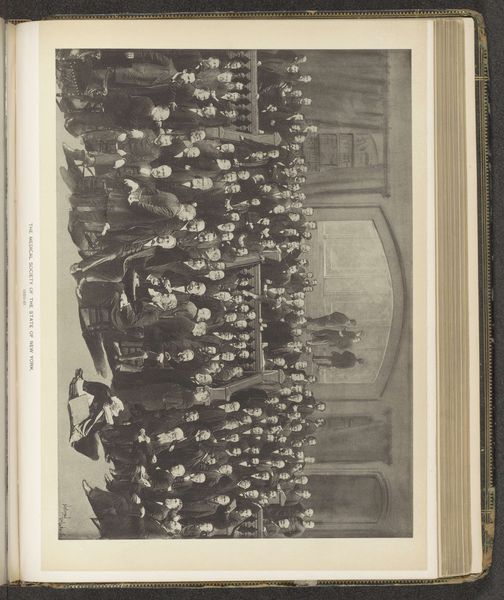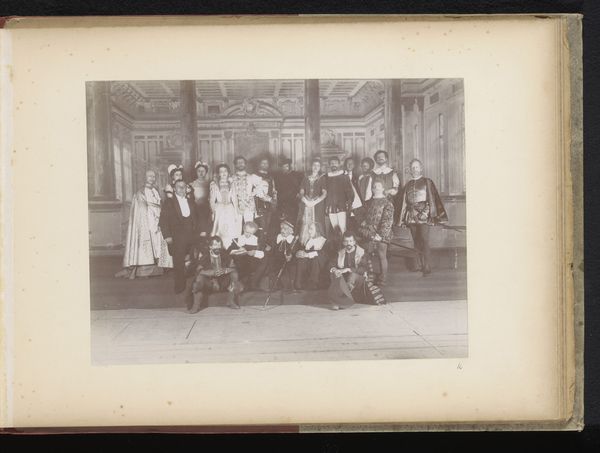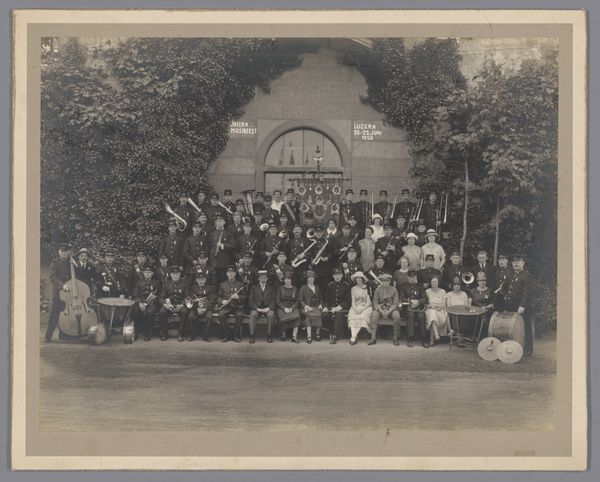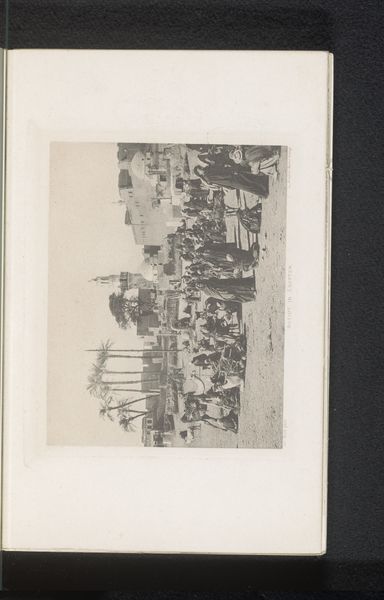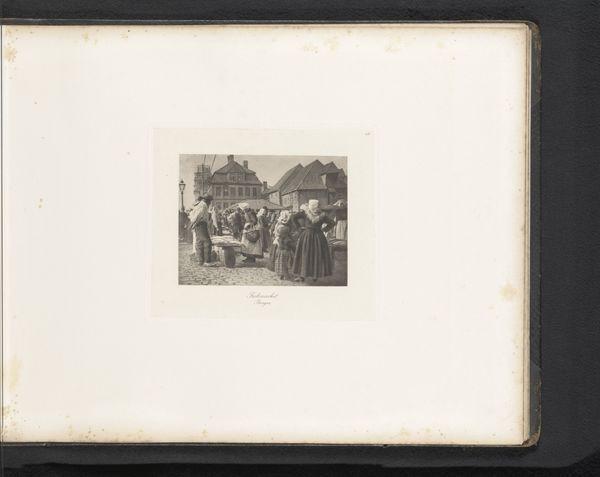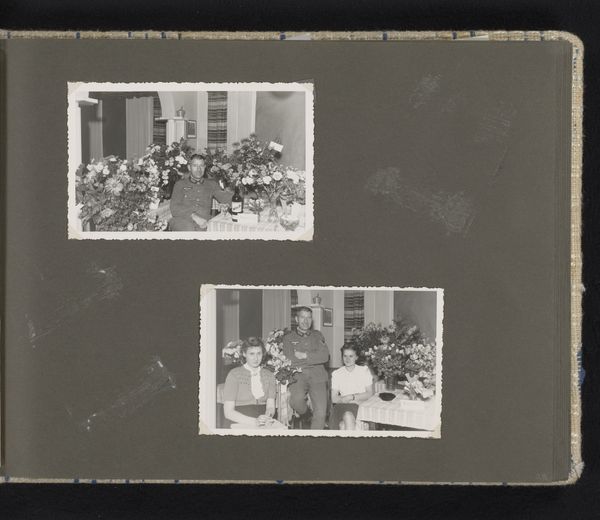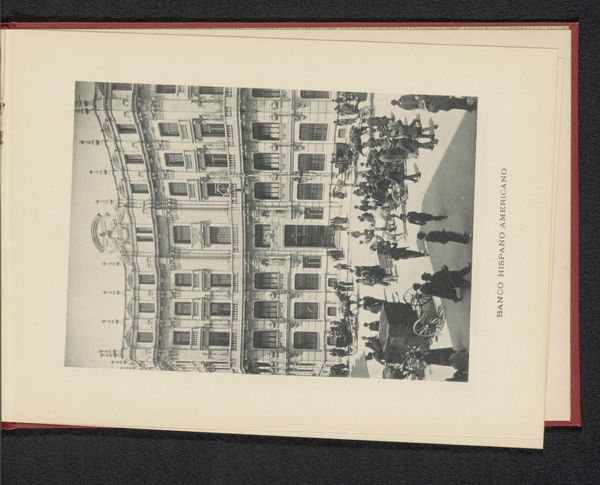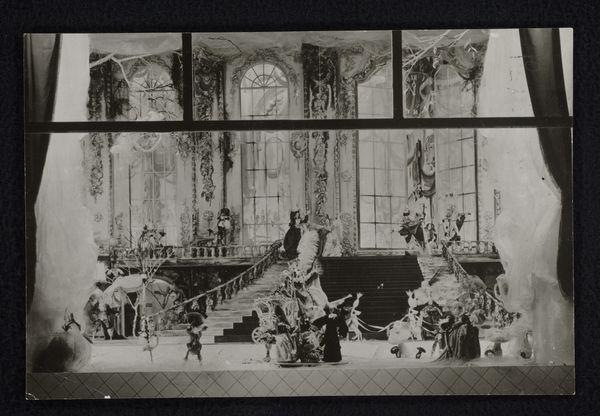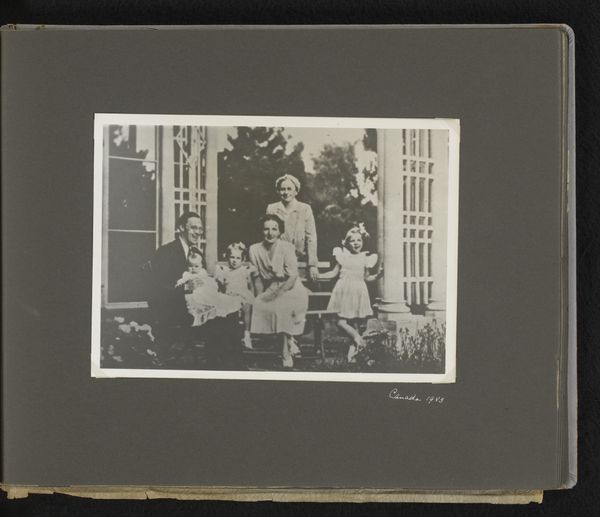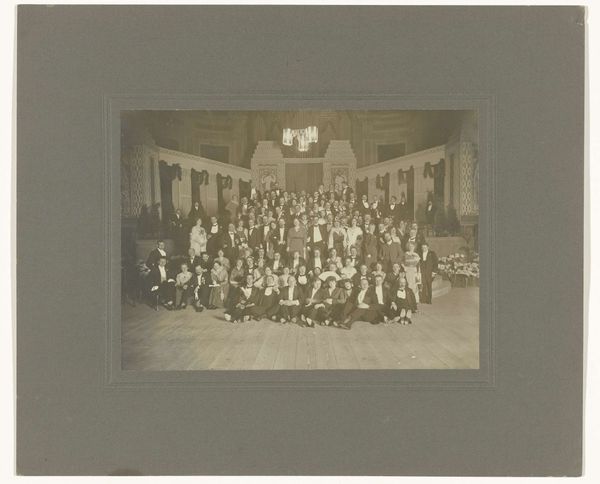
print, photography, gelatin-silver-print
#
portrait
# print
#
photography
#
group-portraits
#
gelatin-silver-print
#
modernism
#
realism
Dimensions: height 130 mm, width 180 mm, height 210 mm, width 285 mm
Copyright: Rijks Museum: Open Domain
Editor: Here we have "Schoolfoto," a gelatin silver print possibly from 1935-1937, by Foto Koch. It shows a large group of students, and what strikes me is the sheer scale – it's a whole school gathered for a single shot. What can you tell us about the story behind an image like this? Curator: What you are seeing is a moment captured at a specific intersection of social structures and photographic technology. Think about the rise of mass education in the early 20th century. Schools became these institutions where children were brought together en masse, creating a sense of national identity and social cohesion. A group portrait like this wasn’t just about documentation. It was about power dynamics within the school. Editor: Power dynamics? In a class photo? Curator: Yes, absolutely. Consider how the children are arranged. The teachers, often in the center or slightly elevated, hold a clear position of authority. Even the act of gathering the children, organizing them, is a performance of control and discipline that reflects the hierarchical structures of the time. Moreover, this image wouldn't exist without the relatively recent affordability of photography. Editor: That makes a lot of sense. Were these photos common at the time? Curator: Yes, in the early to mid 20th century these mass portraits documented shifts in culture towards greater industrialization, schooling and nationalism. These institutions gained significant influence on society, reflecting shifts in demographics. It's important to remember the broader context that enabled and motivated its creation. What does this understanding offer us as we observe this work? Editor: It gives us context to understand the work is as much about collective social values as it is about documenting a moment. It also points out how photographs function as technologies that record this kind of collective experience. Curator: Precisely! We've gone from viewing it as a simple snapshot to understanding it as a social document, revealing power structures, institutional influence, and the developing role of photography.
Comments
No comments
Be the first to comment and join the conversation on the ultimate creative platform.
